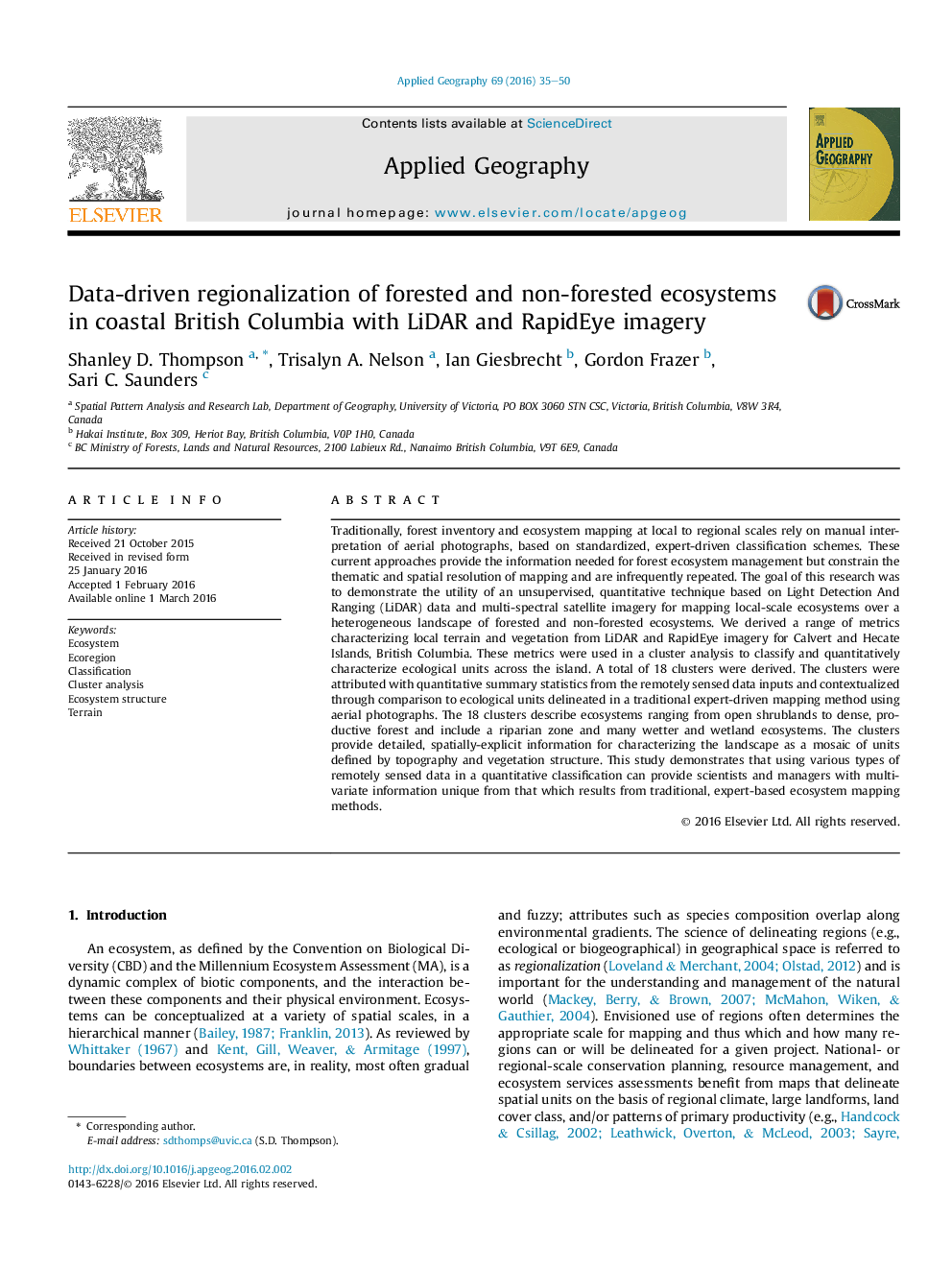| کد مقاله | کد نشریه | سال انتشار | مقاله انگلیسی | نسخه تمام متن |
|---|---|---|---|---|
| 83162 | 158692 | 2016 | 16 صفحه PDF | دانلود رایگان |

• Statistical clustering of remotely sensed data produced a map of 18 ecosystems.
• Spatially-explicit topographic and vegetation structural data quantify each cluster.
• The approach complements traditional methods based on air photo interpretation.
Traditionally, forest inventory and ecosystem mapping at local to regional scales rely on manual interpretation of aerial photographs, based on standardized, expert-driven classification schemes. These current approaches provide the information needed for forest ecosystem management but constrain the thematic and spatial resolution of mapping and are infrequently repeated. The goal of this research was to demonstrate the utility of an unsupervised, quantitative technique based on Light Detection And Ranging (LiDAR) data and multi-spectral satellite imagery for mapping local-scale ecosystems over a heterogeneous landscape of forested and non-forested ecosystems. We derived a range of metrics characterizing local terrain and vegetation from LiDAR and RapidEye imagery for Calvert and Hecate Islands, British Columbia. These metrics were used in a cluster analysis to classify and quantitatively characterize ecological units across the island. A total of 18 clusters were derived. The clusters were attributed with quantitative summary statistics from the remotely sensed data inputs and contextualized through comparison to ecological units delineated in a traditional expert-driven mapping method using aerial photographs. The 18 clusters describe ecosystems ranging from open shrublands to dense, productive forest and include a riparian zone and many wetter and wetland ecosystems. The clusters provide detailed, spatially-explicit information for characterizing the landscape as a mosaic of units defined by topography and vegetation structure. This study demonstrates that using various types of remotely sensed data in a quantitative classification can provide scientists and managers with multivariate information unique from that which results from traditional, expert-based ecosystem mapping methods.
Journal: Applied Geography - Volume 69, April 2016, Pages 35–50